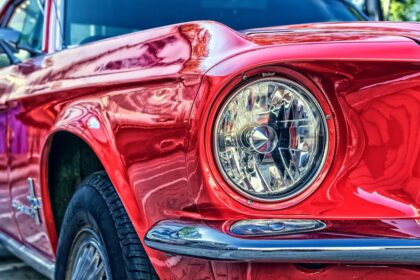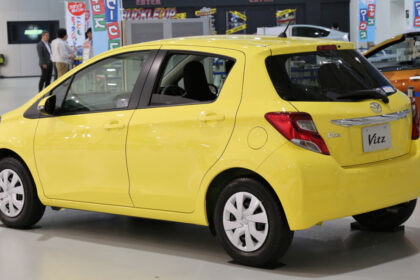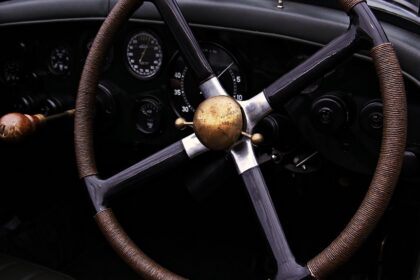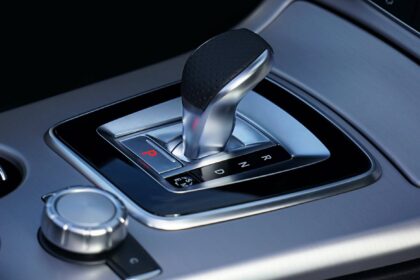If your car’s check engine light comes on, you must know what you should inspect. Otherwise, you might not be aware of a potential problem and could pay for something you could have prevented.
This blog post will go over what to inspect if the light comes on in your car. Stay safe and informed by reading on!
Also, read Why Your Car Shakes when Idle.
What to Inspect if Check Engine Light Comes On
What the Check Engine Light means
The Check Engine light reminds car owners to get their vehicle checked at a mechanic’s shop immediately. This light comes on when the car’s computer system indicators don’t pass some test.
What you should inspect if the light comes on
What you should inspect will depend on what type of car you have—for example, many vehicles with the Check Engine light problems malfunctioning oxygen sensors or catalytic converters.
A mechanic can help you identify which part is causing your car’s computer system to throw off the error code that lights up your dashboard.
Another everyday thing to inspect is if the check engine light comes on
Loose gas cap
This is one of the most common reasons the light comes on, and it’s usually an easy fix. Tighten your gas cap and see if the light goes off.
Bad spark plugs
If your car has a few years on it, spark plugs might need to be replaced. Replacing them when the light is on will prevent future problems.
Low coolant levels
If you’re seeing the light and your car’s temperature gauge is reading high, it could be a sign that your car’s coolant levels are low. Add some coolant or water to your car and see if the light goes off.
Malfunctioning oxygen sensors
These sensors measure how much air and fuel the car is burning, so when they don’t work correctly, it can cause some issues. Replacing them might be your most accessible option for fixing the problem with the Check Engine light.
See also: What is a CVT Transmission and How Long Does it Last?
Faulty sensors
Sensors such as the Mass Airflow Sensor in your car help it run smoothly, but when they go wrong, they can cause problems, including setting off the light.
Malfunctioning engine
If there’s a problem with your engine, it will appear as an error code in your car’s computer system. This is a more serious problem and will require the expertise of a mechanic to fix it.
Inspect the battery and charging system.
If your battery’s charge is low or there are problems with the alternator, it can trigger the Check Engine light.
How to get your car inspected by a mechanic
You can take your car in for an inspection at any shop. Some mechanics offer free reviews, while others charge only the cost of parts along with hourly labor rates.
If you have an older model vehicle without a computer system to indicate what’s wrong, take your car to a mechanic and ask them for help identifying the problem.
Read also Signs You Need New Brakes.
Common problems that can cause the light to come on
Many different issues can cause the light to come on. The most common issues are the car’s engine, electrical system, or catalytic converter.
These problems can range from loose gas caps to malfunctioning sensors integrated into your car’s computer system.
How to fix those problems yourself, or take your car to a mechanic for repair
It is possible to fix the problem yourself. Most of the time, it is a simple issue such as a loose gas cap or bad emissions sensor.
It is best to take your car in for inspection and be labeled with the exact problem anyhow because if you replace parts on your own and that doesn’t work, you will have wasted money and time.
An oxygen sensor problem is straightforward to diagnose because the Check Engine light will come on in addition to a “Check Engine” response when you run your car’s diagnostics.
Replacing bad oxygen sensors can be done yourself or by a mechanic, depending on how comfortable you are with cars.
A faulty catalytic converter is why a mechanic will inspect your car first because replacing them can be dangerous due to the gasoline fumes released from the engine once the new part is in.
Prevention tips to keep the light from coming on in the first place
Drivers can take steps to help avoid Check Engines light problems, such as obeying manufacturer suggestions for regular auto maintenance and oil changes.
These steps are generally cost-effective because they keep your car running smoothly while preventing problems that can cost you any money to repair.
As the saying goes, an ounce of prevention is worth a pound of cure.
You are taking care of your car before serious Check Engine light problems will be less expensive than waiting for something to break and then spending more on dealer-recommended auto repairs beyond what your car warranty will cover.
You may also read; What You Should Consider Before Buying a Car.
How to reset the light
If you turn your car off and on, the light should go out due to a temporary problem like a loose gas cap.
However, if the light doesn’t go out, it usually means some severe issue with your car’s computer system.
Things to consider if the light comes back on after repairs
If you have your Check Engine light problem fixed and it returns, another issue has probably developed since your last visit to a mechanic.
This could be due to an old part failing or a new malfunctioning, so it’s best to contact your mechanic or another trusted car professional.
The meaning of the different colors in the Check Engine light
Three primary colors will appear in your Check Engine light: red, yellow, and blue.
A red light means a severe issue that needs to be repaired immediately before it causes damage to your car’s engine.
A yellow light could mean a problem with your car, but it isn’t as urgent. Be sure to get it checked out soon, though, because the light will turn red if the issue gets worse.
A blue Check Engine light means an issue with one of your car’s emissions systems or sensors.
This is a minor, severe type of issue, and it causes your car to run slightly less efficiently. You can keep your vehicle from having blue Check Engine light problems by taking good care of it.
When to take your car in for an inspection
The easiest time to have a professional inspect your car is at the mechanic shop when you have either the Check Engine or Service Engine. Soon, light comes on because they can read both your car’s computer and the code displayed on your dashboard.
However, it’s still a good idea to have your car inspected if you notice any warning lights come on in the middle of driving.
If a check engine light is coming on and going off or if you notice a “Check Engine” or “Service Engine Soon” light pop up, then it’s a good idea to have the car inspected by a professional as soon as you can.
Is it safe to drive with the Check Engine light on?
You should always err on the side of safety when driving, so if you notice that your car’s Check Engine light is on, don’t hesitate to call your mechanic.
Driving a car with the light on is extremely dangerous because you won’t be able to tell what the issue is, and you’ll have no idea how bad it is or if it will worsen while you’re driving down the road.
Information about your car’s parts
Every car has different check engine light parts, but they all serve the same purpose of helping your vehicle run smoothly. The check engine light parts you see most often are listed below:
EGR System
This system aims to reduce nitrogen oxide emissions by lowering the exhaust gas temperature before leaving your engine. This part can malfunctioning if you have a red Check Engine light.
Fuel Injectors.
Fuel injectors are small tubes that precisely shoot gasoline into the engine so your car keeps running smoothly. A faulty fuel injector can cause a red Check Engine light, and you should have it fixed as soon as possible.
Catalytic Converter.
The catalytic converter helps reduce harmful emissions by converting carbon monoxide and other toxic gases into much less harmful substances.
This part can fail if you have a yellow Check Engine light, but it’s not as important to replace as an EGR or fuel injector.
Sensors
Sensor problems can cause your car to have a blue Check Engine light problem. There are sensors located all over the car that help it run more efficiently, and they can fail if you don’t take care of your car.
If any of these parts are having problems, they’re usually the cause of the light coming on.
When someone needs to get their check engine light inspected, they should figure out what part is causing the problem by looking at the car’s service history and searching online for common issues with that part.
What to do when a mechanic tells you there isn’t a problem with your check engine light
If a professional tells you that there isn’t a problem with the device that controls your Check Engine light, double-check what type of code they’re displaying on your dashboard before leaving.
The mechanic may only be able to read one type of problem, so it could be worth your time to go back and have them look at your car again if you think they’re not looking at a suitable device.
Read also The Most Fuel-Efficient Cars in Kenya.
In Summary:
If you’re experiencing a Check Engine light problem, it can be difficult to tell if the issue is severe or not. Some people may fix the problem before taking their car into an auto shop for a professional inspection.













